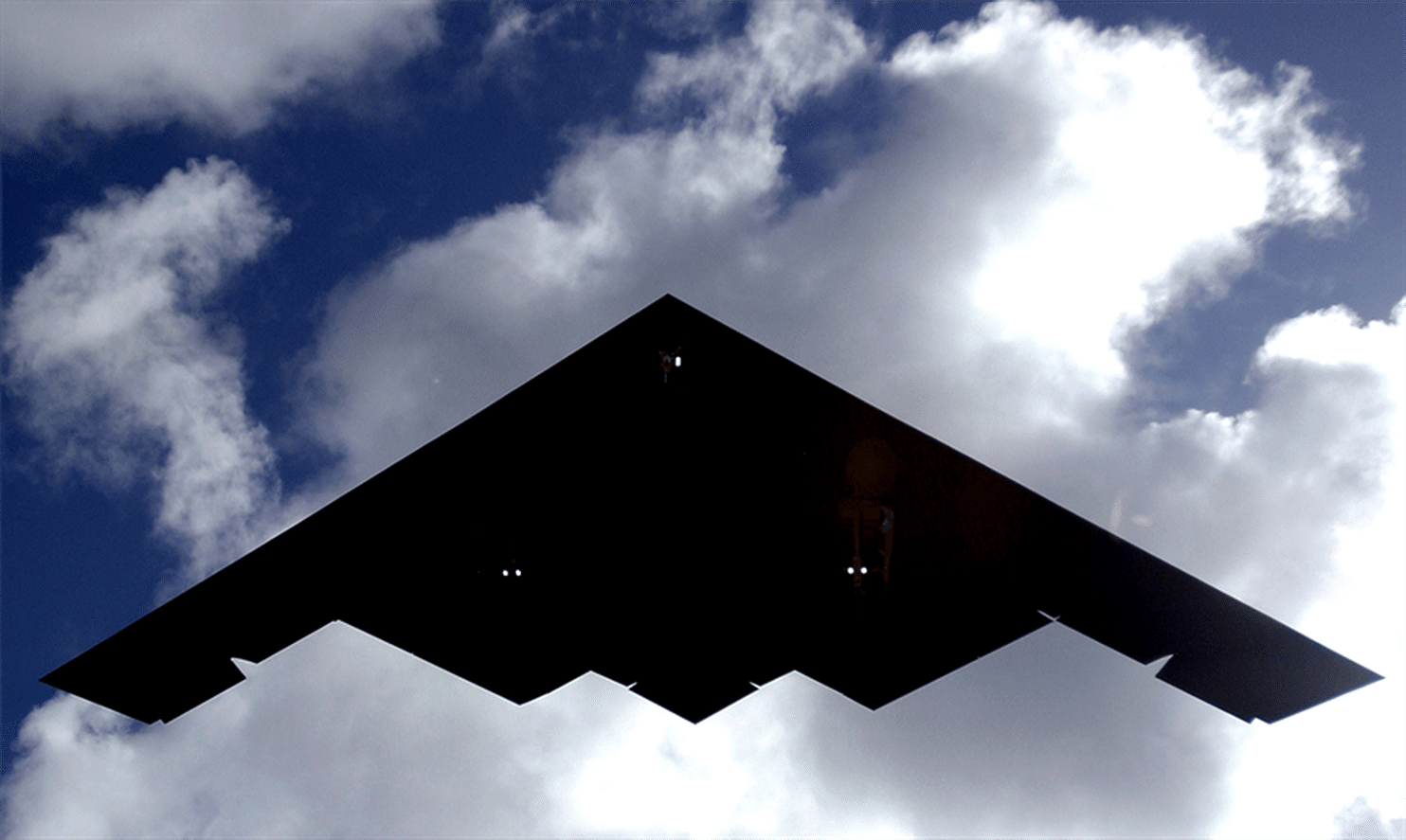The U.S. flew stealth bombers across the globe to strike ISIS camps in Libya

2017-01-21T20:20:00+00:00
U.S. stealth bombers took off from Whiteman Air Force Base in Missouri in support of operations near Sirte. The U.S. conducted airstrikes targeting Islamic State encampments 30 miles outside of the Libyan city. (The Washington Post)
U.S. stealth bombers took off from Whiteman Air Force Base in Missouri in support of operations near Sirte. The U.S. conducted airstrikes targeting Islamic State encampments 30 miles outside of the Libyan city. A B-2 bomber takes off in support of operations near Sirte, Libya (The Washington Post)
Two Air Force B-2 stealth bombers struck Islamic State camps southwest of the Libyan city of Sirte on Wednesday night, less than a month after the Pentagon declared an end to an extended air campaign there.
Pentagon press secretary Peter Cook said that the aircraft, known for their distinctive bat-like appearance, dropped more than 100 bombs and hit two Islamic State encampments about 30 miles outside Sirte. The outposts were inhabited at least in part by fighters who had fled the city in the fall, and the operation was approved by President Obama, Cook said.
Defense Secretary Ashton B. Carter told reporters Thursday that the camps contained militants “actively plotting” attacks in Europe and that the strikes were “critically important.”
Checkpoint newsletter
Military, defense and security at home and abroad.
Please provide a valid email address.
“As always, external operations are a very important part of the reason to destroy ISIL, as well as to wipe them out of Libya itself,” Carter said, using an acronym for the Islamic State.
MQ-9 armed drones also participated in the strikes, using Hellfire missiles to hit targets that remained after the initial bombardment, Col. Patrick Ryder, an Air Force spokesman, told reporters. The operation took 34 hours, and the two B-2s, named the Spirit of Pennsylvania and the Spirit of Georgia, flew from Whiteman Air Force Base in Missouri to carry out the strikes, Ryder said. The camps were in remote desert locations, and no civilians were believed to have been hit in the bombardment, officials said.
The militants declared Sirte the capital of their Libyan caliphate less than a year ago. U.S. aircraft began pounding the city with airstrikes in August in an effort to support Libyan government ground forces. Western Special Operations troops, including a small contingent of Americans, also helped in the offensive.
In total, the United States launched more than 500 airstrikes in the air campaign, called Operation Odyssey Lightning. Toward the end of the mission, a small pocket of Islamic State fighters in downtown Sirte proved especially resilient, forcing a weeks-long effort of concerted strikes and heavy ground fighting before the roughly dozen or so fighters were killed or surrendered.
[U.S. strikes Islamic State stronghold in Libya, expanding campaign against militant group]
The U.S. military has other aircraft based much closer to Libya than Missouri, but the Pentagon chose the B-2s for their ability to drop many bombs in a short time span and loiter overhead for a long time, Ryder said. Each plane can carry 40,000 pounds, and up to 80 500-pound bombs known as Joint Direct Attack Munitions (JDAMs). The B-2 has not been used in combat since 2011, when they they were part of Operation Odyssey Dawn.
The Washington Post reported in November that the Pentagon had been quietly preparing for follow-on strikes once Sirte was liberated, focusing intelligence-gathering assets and surveillance aircraft on the fighters who fled the city as their defenses crumbled.